- Home
- Gail Godwin
Publishing Page 8
Publishing Read online
Page 8
A Random House novelist who had combatively corrected her at a recent gathering: “No, there are three great American writers: Bellow, Roth . . . and me.”
The “vile tantrum” of another Random House novelist whose bound galleys had failed to arrive at a Southern booksellers convention.
Anne Tyler’s and Jane Smiley’s “wonderful new novels.” (Even the best-meaning publishers can’t resist going on a bit about the other writers on their lists, but I didn’t want to hear it.)
Then came Linda’s harrowing Wings of the Dove story, which I remembered without any recourse to a diary.
When she was walking me back to my hotel she asked if I had started writing a new book and I said, “Yes, but it will probably make someone jump out the window.” “Oh, no,” she wailed, “that means me.” “No, not you,” I judiciously answered, though I assumed it would be. I didn’t get very far with that novel about an order of nuns who host retreats in a woodland convent near Washington, D.C., and the cross section of seekers during a period of two weeks—in other words, more religion for poor Linda. As it turned out, we were never to see each other again.
“The publishing industry is becoming downright hazardous to humans,” John Hawkins had commented when Linda’s predecessor, who had so ardently wooed me, underwent grueling health and personal crises soon after being fired (though eventually her star would rise even higher).
What was the new publisher and president like, I asked John. Who was Linda Grey? Well, she had risen from the bottom in the industry. Attractive, friendly, but very private. No rumor of any significant other in her life. She lived alone in a modest New York apartment until the huge salary heaped on her by Random House when she became president and publisher of Ballantine impelled her to buy a house in the Hamptons “for an investment” to which she dutifully drove on bumper-to-bumper weekends in the Lexus that Random House leased for her. It had a state-of-the-art kitchen, which she never used. She seldom cooked, except for close friends in the city, and she had no animals or plants.
When I met her I was surprised at how pretty she was: slim, pale, tallish, with blue-gray eyes, short dark curls, and a retroussé nose. Her smile had a winning “just between us” intimacy to it. Though not superstylish, she dressed well, except for the scratched brown purse she always lugged over her shoulder.
The night of our last dinner, she told me that her ambition since childhood had been to teach high school English. She went straight from graduation at SUNY Binghamton to Yale, where she had won a scholarship to summer school. For postgraduate credits, she was to teach three remedial sections of high school English and take one intensive course in literature. The single book to be studied in this course was Henry James’s late masterpiece, The Wings of the Dove.
The high school remedial classes were exhausting and she felt intimidated by Yale. When at last she sat down to apply herself to The Wings of the Dove, she entered a living nightmare. The words on the page refused to sustain a narrative. She said it was like unlearning to read, going backwards from accumulated meaning to isolated signifiers. She had read and taught other works by James and told herself it was because she was tired, it would be better tomorrow. But it only got worse: the book closed its doors against her like an esoteric club. Eventually she broke down, abandoned her scholarship, and went home to Brooklyn, where her father refused to speak to her for the rest of the summer. She taught English for a while in a very rough high school in Brooklyn, broke down again, then decided to enter publishing. Editorial assistant. Managing editor. Editor in chief. President and publisher.
Evensong was published in March 1999. Linda and I were to meet for an early dinner after I taped Fresh Air with Terry Gross. Linda was going to present me with the framed painting she had commissioned for the book jacket. When I got back to my hotel room after the taping, my phone was flashing. Call John Hawkins. “Bad news. Linda’s been fired. Thank God this didn’t happen two weeks ago or we’d really be up shit creek.”
Linda called me from her house in Hampton Bays. Her feelings were hurt, she said, but she considered it a blessing. The stress had been too high. “There is no graciousness in publishing anymore,” she said. When she had asked to buy the Lexus they had leased for her, the business office would accept a cashier’s check only. “Here I have been in charge of their business for six years and they don’t trust my personal check.” What she minded most was that she cared about all those people who worked for her. However, everything was in place for Evensong. The ads (paid for by me) had been sent out. Fifty thousand copies shipped, second printing ordered. And she would be mailing the painting to me.
This appeared a year and a half later on the New York Times obituary page.
September 13, 2000
Linda Grey, 54, a Publisher Who Led the Ballantine Group
By Doreen Carvajal
Linda Grey, a top publishing executive who rose from editorial assistant to president and publisher of the Ballantine Publishing Group, died on Aug. 30. She was 54 and lived in New York.
The cause was complications from lung cancer, said Alan Davies, a friend of Ms. Grey’s.
Ms. Grey resigned from her position at Ballantine last February during a reorganization of the company that came more than a year after the media conglomerate Bertelsmann moved to acquire Ballantine’s parent, Random House.
She got her start in publishing in 1970 as an editorial assistant at Coward McCann & Geoghegan. Later she rose to become managing editor there and then took executive positions at Dell Publishing Company, where she was its editor in chief. In 1981 she moved to Bantam Books as an editorial director and became its publisher and editor in chief in 1985.
She left that position in 1992 to start her own short-lived imprint for the company, Linda Grey Books, which published just one book, “It Doesn’t Take a Hero: The Autobiography of General Norman H. Schwarzkopf.” The imprint was dissolved the same year after the announcement that Ms. Grey was resigning to become president and publisher of the Ballantine Publishing Group . . .
After her resignation from the Ballantine Publishing Group, Ms. Grey, who was unmarried, essentially retired from the publishing industry, although she continued to counsel authors who were her close friends.
They were practically united and splendidly strong; but there were other things—things they were precisely strong enough to be able successfully to count with and safely to allow for; in consequence of which they would for the present, subject to some better reason, keep their understanding to themselves.
Sometimes, when James is being really maddening in The Wings of the Dove, I pause at the end of a labyrinthine passage and speak to the exhausted young Linda in summer school at Yale. (“Okay, all that is happening here is Kate and Densher have engaged themselves, but for money reasons they have decided to keep it a secret.”)
Then I wonder if she got that far. It’s on page 118, after all. What a prose thicket to confront after a day of teaching remedial English! Didn’t anyone look over her schedule and suggest maybe—? Or was there a sadistic winnowing process going on here? I can’t ask her now, but whenever I reread that novel—and it does offer its abstruse glories and intricate moral windings when you have all the time in the world and no career to make—she’s with me.
The Good Husband, The Sorrowful Mother, and The Red Nun
SKIRMISHES AND CAPITULATIONS
“We reserve to ourselves the right to give another title to the book, for we do not like that of ‘The Archer of Charles IX.;’ it does not sufficiently excite the curiosity of readers; there are several kings named Charles; and in the middle ages there were great numbers of archers. Now, if you had made it ‘The Soldier of Napoleon,’ well and good; but ‘The Archer of Charles IX!’ why, Cavalier would be obliged to give a lecture on the history of France for every copy he sells in the provinces!”
“If you only knew the persons we have to deal with!” cried Cavalier.
“‘The Saint Bartholomew’ would be a be
tter name,” continued Fendant.
“‘Catherine de Médicis,’ or ‘France under Charles IX.,’ would be more like Walter Scott,” said Cavalier.
“Well, we can make up our minds when the work is printed,” said Fendant.
“Whatever you like,” said Lucien, “provided the name suits me.”
Honoré de Balzac, Lost Illusions (1837), translated by Katharine Prescott Wormeley (1893)
How can an author tell when she is being “mulish” and “unlistening” about editorial suggestions (to quote from the Alan Williams epigraph in the chapter “Publishing Partners”) and when she is simply standing up for her vision and protecting the integrity of her work? How, on the other hand, does she differentiate between an editor’s genuine desire to make a book or a story better and an editor’s subtle egoism, philistinism, or corporate toadying? With every book I turn in, I like to believe I grow more adept at discerning editorial motives. Regarding the skirmishes, I am proud of the instances when I dug my heels in to defend my vision and I rue the times when I compromised or caved.
In retrospect—emphasis on retrospect—some of these editorial combats seem funny; others I have filed under “valuable life lessons”; one of them I unreservedly regret.
WOODSTOCK, AUGUST 17, 1993
All was well, I thought. I had delivered the manuscript of The Good Husband. Hawkins had checked in. (“This is a big one. Compelling all the way to the end. Oh, and I’m relieved Alice and Francis didn’t get together. I can’t see them in bed.”) Linda Grey had phoned. (“You brought it off! I’m going to reread it to get all the undersurface things and make some notes, but, Gail, the news is really good.”) She said she’d like to drive up to Woodstock with Hawkins the following week and we’d go over the notes and make plans for publication in the fall of 1994.
In the interim, I went over the manuscript myself, imagining I was Linda. I improved some things and tried to foretell what she might still want me to put in.
They arrived promptly in her company-leased Lexus. When I went out to greet them, they radiated that nervous intimacy between two people who have been discussing the third in ways she doesn’t know about yet. Robert fixed drinks, the four of us sat down, and Linda and John plunged wholeheartedly into trendy banter about some madam in the news called Heidi Fliess. Then our fax machine in the next room beeped and started spitting out pages. “Oh,” said Linda. “That may be from ——— and ——— (Ballantine editors). I asked them to fax me their notes on The Good Husband.”
Surprised that other editors were in on this, I went off to retrieve the notes and began skimming them as they burped hot from the machine.
The novel might work better if she took out that whole cruise section after Magda dies and had them stay in town and work things out there.
I’m sorry, but I want Alice and Francis to get together. I want to see them in each other’s arms at the end of this novel!
There was more. Why was this coming now? Was it a last-minute assignment for the other editors? Had they just now finished reading the novel? Or had Linda known before today they hadn’t loved it? Had she discussed it with John driving up in the car? Was this Linda’s way of breaking it to me, having me read the bad news instead of her having to tell me?
Later, Robert and I would discuss what I did afterward. “It wasn’t so bad,” he said. “Your social side just shut down for a while. Under the circumstances, mine would have, too.”
“What did I do?”
“You don’t remember?”
“Yes, but I want to hear it from you. And please don’t sugarcoat anything.”
“I am not a sugarcoater, my dear. You came back into the room holding the faxes and told Linda you needed to be alone while you went over these notes, that you hadn’t been expecting them. Then you gave John the big umbrella and told him to take Linda outside and show her the grounds. They seemed glad to go. You sat down at the big table and read the pages. Then it started raining harder and harder and I thought they should come in. You served lunch and told Linda you were going to read all the notes very carefully and then go through the book again and it might take several months. She and John said they didn’t expect it to take you anywhere near that long, and you said you wanted to have the option anyway. Your chicken salad was excellent.”
I packed up the manuscript and some yellow pads and Linda’s notes, disregarding the others, and drove down to Asheville to lie low in my mother’s condo and rethink the book. Her personality still inhabited its rooms. I lay in her big bed and looked out at her view of Elk Mountain and watched the light change. At five every day I went to St. Mary’s Church for evensong. Father Edward, the rector, and I went to lunch at Grove Park Inn, and I confided I was planning a follow-up novel about Margaret of Father Melancholy’s Daughter. Father Edward lived in the real-life rectory I had borrowed for that novel. He said some strangers had come asking to go upstairs and see the witch’s closet in Margaret’s room, but it was his bedroom and he had to say no. I spent time with my late brother Tommy’s thirteen-year-old son, Justin, who had inherited his father’s bizarre sense of humor.
OVERFRIENDLY WAITER: Now, tell me, are you two related?
JUSTIN: No, she’s my wife’s sister’s girlfriend.
Sister Winters and I went on our usual picnic and brought each other up to date. She had been on her annual retreat with the Jesuits. (“My spiritual director said, ‘Tell me about your prayer life this past year,’ and I said, ‘First I’ll tell you about my life this past year and then my prayer life will make more sense.’”) The Asheville convent was being sold, and the few nuns left would be moved to Boston.
Justin spent several nights with me at the condo and we went through Mother’s nightstand, where she had kept her private books and writings. The diaries were with me in Woodstock by then, but her spiritual books were still stacked inside the chest, smelling faintly of her perfume. There was also her bound galley of A Southern Family, with pages earmarked. Squashed behind The Cloud of Unknowing we discovered a pocket-size spiral notebook with a day-by-day account of the time Justin had stayed with her and her husband after Tommy’s death. The writing was legible though it required effort (this was before she took her calligraphy course), but Justin was ecstatic and asked if he could have the little notebook. “This is my history,” he said. Later, after he had deciphered every last word: “Boy, was I loved.”
I spent hours with my childhood friend Pat Verhulst, a college professor, whose 1979 story about her acrimonious beach trip with her newly widowed mother and sister had given me the impetus for A Mother and Two Daughters. (“Take it if it interests you,” she had said at the time. “My nuclear family bores me to death.”) Pat was the only one in Asheville I told about Linda and John’s visit to Woodstock. She fumed with me when I got to the faxes and cackled maniacally at the big White Flower Farm umbrella moving back and forth, back and forth, outside the window while the rain poured down.
Returning to Woodstock two weeks later, less indignant and renewed, I revised the novel in forty days (lovely number), incorporating all of Linda’s suggestions that didn’t alter the book’s structure. I found other things to improve; it is a rare manuscript that can’t benefit from one more run-through. “Brava,” said Linda and sent it off to copyediting. The cruise was left in and made indispensable by the lecture Hugo, the featured writer, gives to the passengers about beginnings, middles, and ends, in life and in novels. Francis and Alice remained friends.
IOWA CITY, 1969
Months went by while John Hawkins shopped around “The Sorrowful Mother,” as the story was then called. Understandably the women’s magazines balked at an ending where the mother makes a lot of food and then does herself in, but eventually he called to say that Gordon Lish over at Esquire loved the story if I would consider making a few changes. I said Esquire didn’t seem to me the kind of magazine that would publish such a story, but John told me that Lish was turning things around over there. “More experimental stuff,
” said John. “People in the trade are calling him ‘Captain Fiction.’” So I agreed to let Captain Fiction mark up the manuscript of “The Sorrowful Mother” and send it to me for my approval.
When it arrived, half of it was gone. “He took out all the dreams!” I complained to John. “The story doesn’t make sense without the dreams.”
“I’ll get back to you,” said John.
Lish told John the woman would be more inscrutable without the dreams.
I asked a professor on my doctoral committee for advice. “Look at it this way, Gail,” he said, after he had read both versions. “A writer who had read Kafka might leave out the dreams, but it makes the character an entirely different woman. With the dreams, you pick up on her hatred; without them, she’s simply an enigma. You might ask him to publish both versions. That would certainly be experimental.”
“The Sorrowful Mother” was published as “A Sorrowful Woman”—without the dreams—in the August 1971 Esquire, one of the last of the elegant oversize-page issues under the distinctive reign of the editor Harold Hayes. The magazine cover featured a full-bodied portrait of a well-dressed gangster, all in sepia tones (“The Story of Joe Bonanno and His Son, by Gay Talese.”) Beneath the title “A Sorrowful Woman,” Lish had attached a boldface fairy-tale-like opening of his own:
Once upon a time there was a wife and mother one too many times . . .
WOODSTOCK, N.Y., 2014
If I type “Gail Godwin A Sorrowful Woman” into the Google box today, I find more fallout from that forty-five-year-old story than I want to explore. I haven’t yet scrolled down the entries until they dissolve into gibberish, but most of them involve offers of essays to students who have been assigned to write on it. On one site, you can choose from a selection of free essays (pretty bad) or pay up to $34.95 for “better,” “stronger,” “powerful,” “term papers,” or “research papers.” On the Internet the plight of the story’s unnamed woman is examined from the points of view of clinical depression, suicide, family life, marriage, seasonal affective disorder, and first-wave feminism. It is “compared and contrasted” with “Briar Rose,” “Bartleby the Scrivener,” “The Story of a Year,” “Barn Burning,” and “The Yellow Wallpaper.”

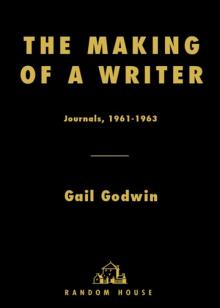 The Making of a Writer
The Making of a Writer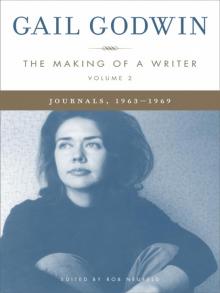 The Making of a Writer, Volume 2
The Making of a Writer, Volume 2 Old Lovegood Girls
Old Lovegood Girls Flora
Flora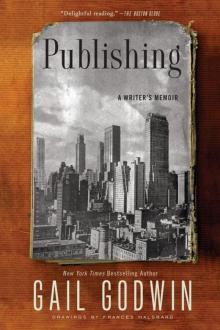 Publishing
Publishing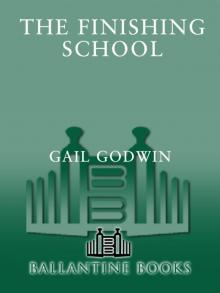 The Finishing School
The Finishing School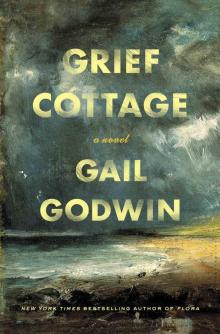 Grief Cottage
Grief Cottage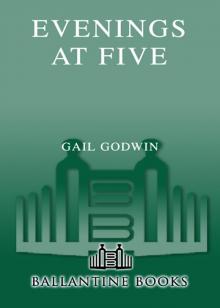 Evenings at Five
Evenings at Five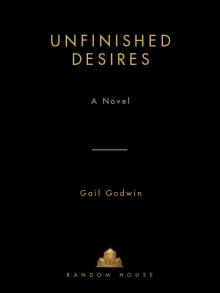 Unfinished Desires
Unfinished Desires